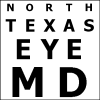Babies and Vision
Babies have poor vision at birth but can see faces at close range, even in the newborn nursery. At about 6 weeks of age, a baby should be able to fixate on an object (such as a face) and maintain eye contact. Over a child’s first few years, vision develops rapidly; 20/20 vision can be recorded by 2 or 3 years of age with some techniques.
Parents should be aware of signals of poor vision. If one eye “turns” or “crosses,” that eye may not see as well as the other eye. If the child is not interested in faces or age-appropriate toys, or if the eyes rove around or jiggle (called nystagmus), you should suspect poor vision. Other signs to watch for are tilting the head and squinting. Babies and toddlers compensate for poor vision rather than complain about it.
Should a baby need eyeglasses, the prescription can be determined fairly accurately by dilating the pupil and analyzing the light reflected through the pupil from the back of the eye.
A baby’s vision can also be tested in a research laboratory, where the brainwaves are recorded as the child looks at patterns of stripes or checks on a television screen. This is called a visually evoked potential (VEP) test. Another test, called preferential looking or Teller acuity cards, uses simple, striped cards to attract the child’s attention. In both tests, as the stripes grow smaller and closer together, they become more difficult to see, and the child’s level of visual acuity can be assessed.
